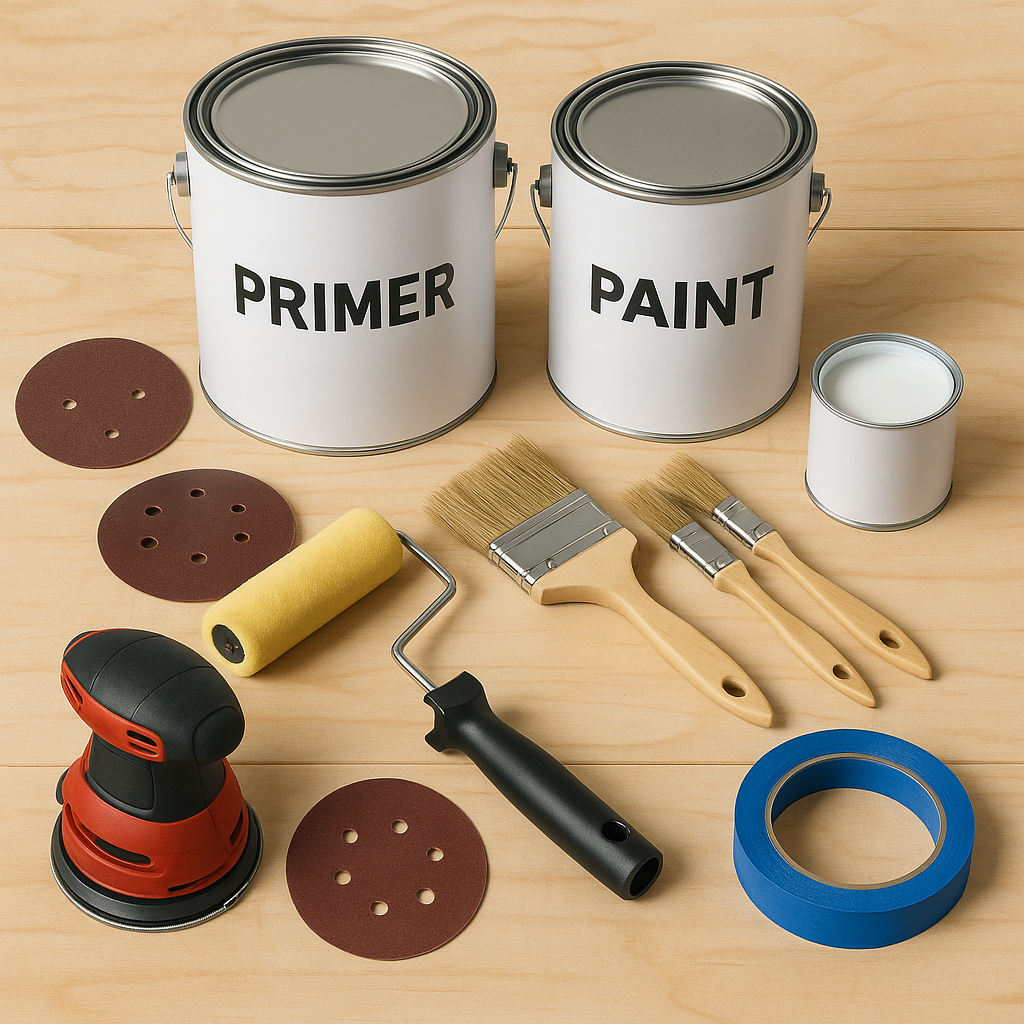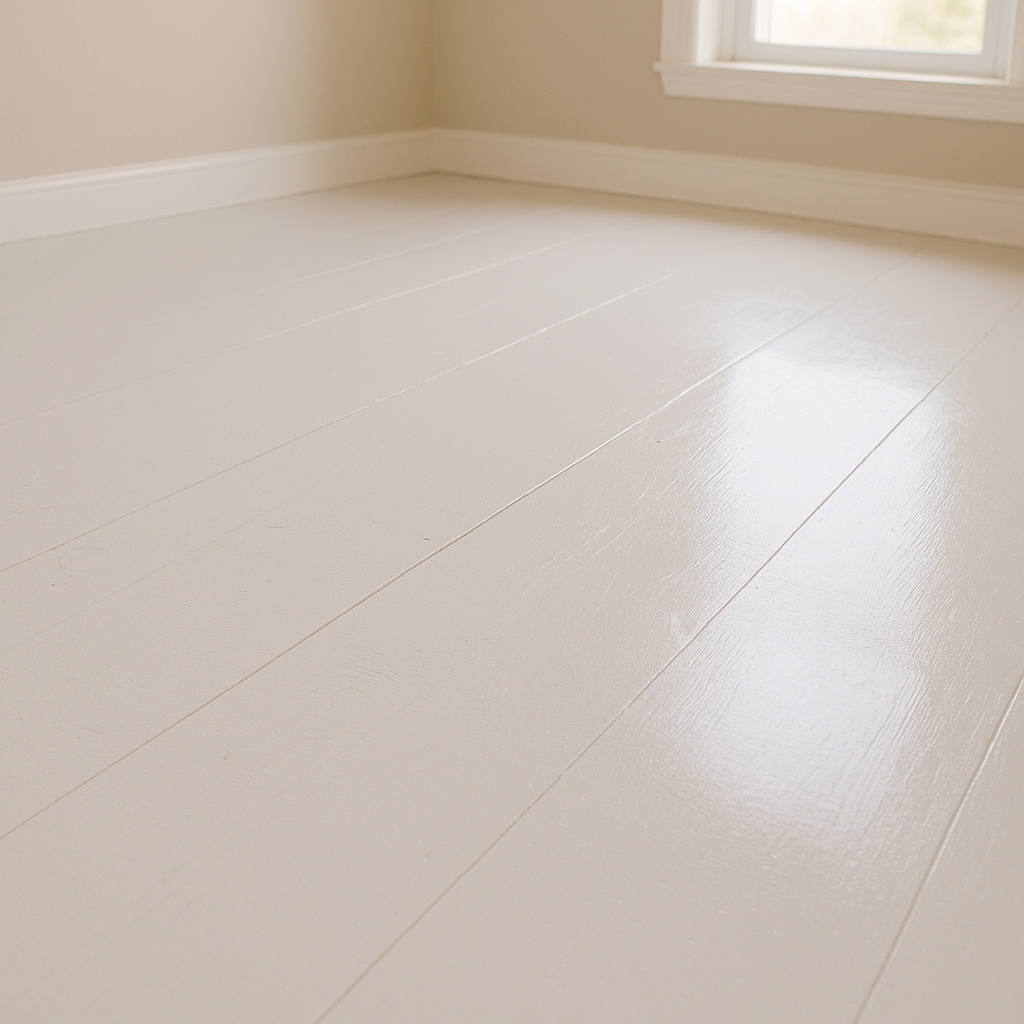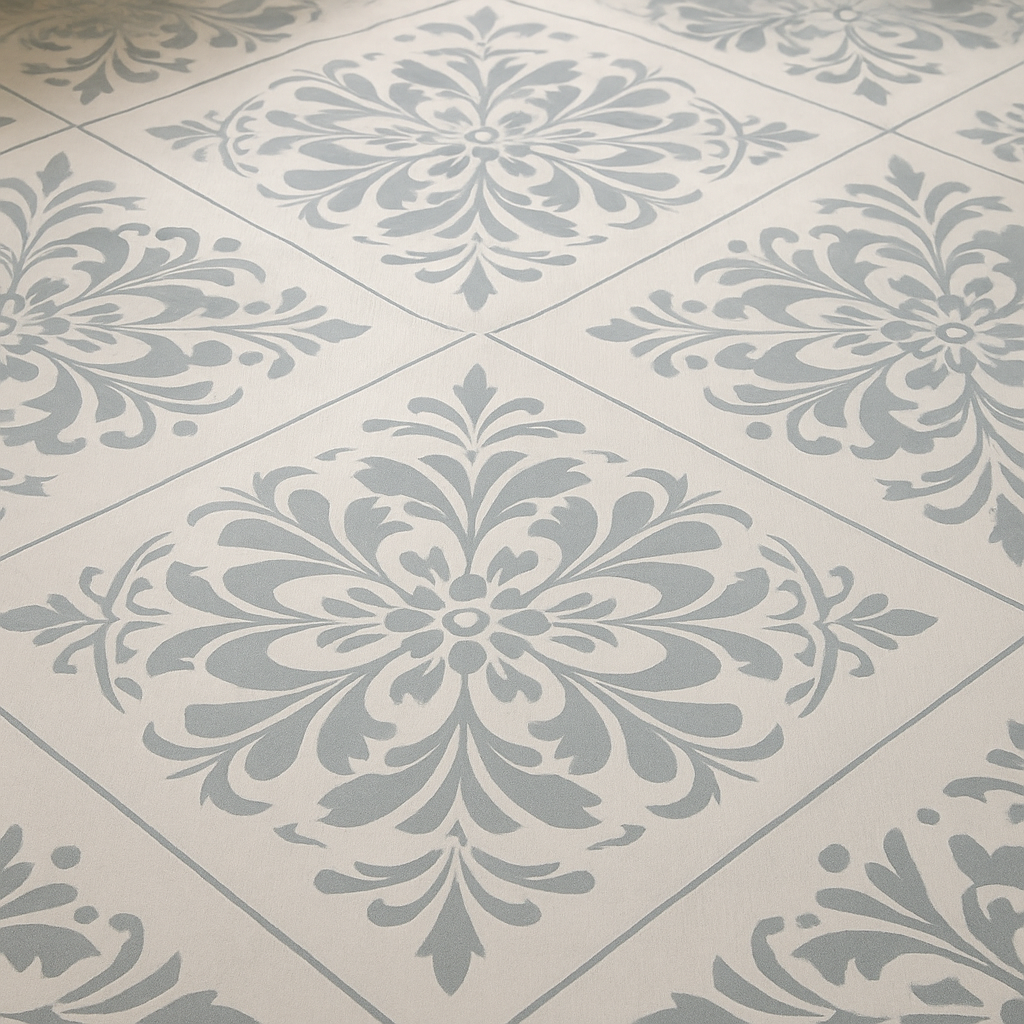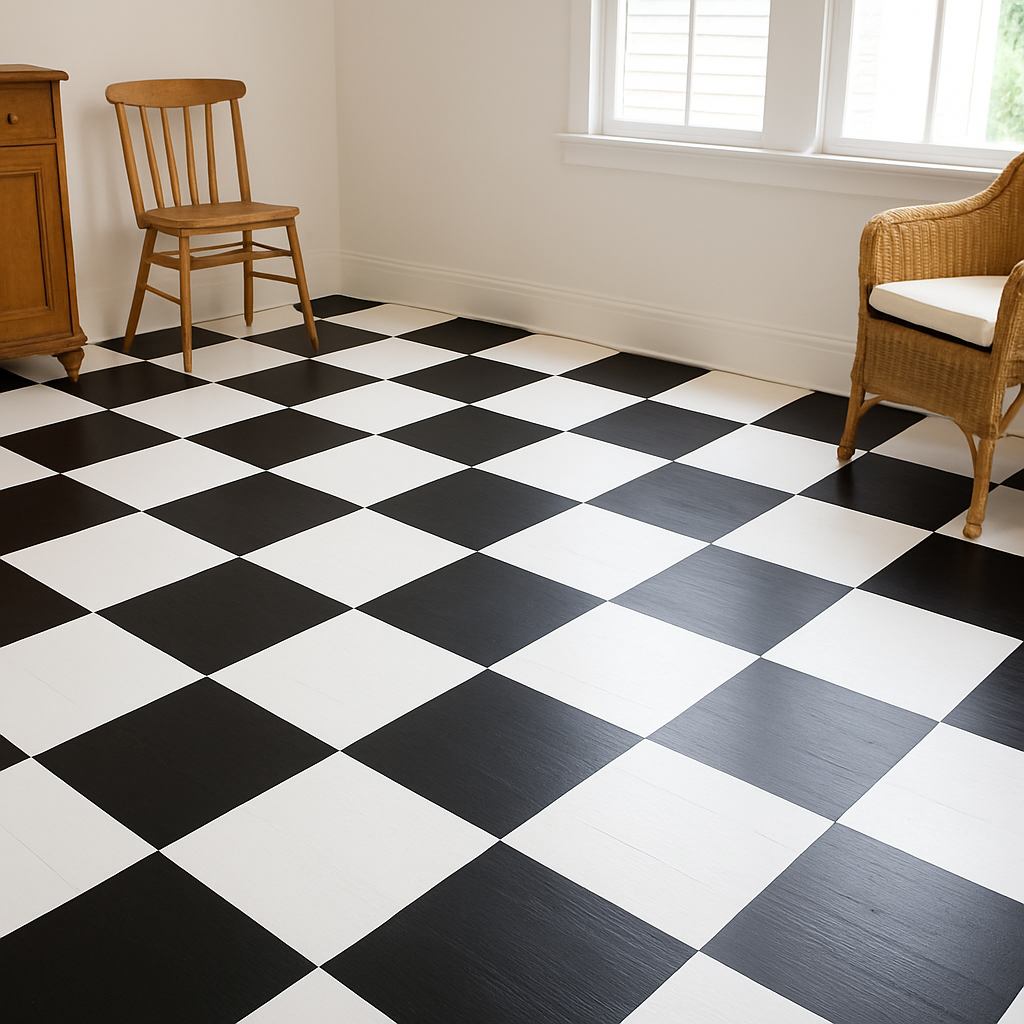Painted plywood floors are an incredibly affordable and creative way to refresh any room—especially if you’re working with a raw subfloor. Whether you’re tackling a converted attic, a rental, or just trying to stretch a renovation budget, this guide will show you how to transform plywood into something beautiful and long-lasting.
I’ve done this myself in several rooms, and the difference was night and day. With a bit of prep, paint, and patience, you can turn plain plywood into a stylish, durable floor that looks great and holds up over time.
What You’ll Need to Get Started
Before you break out the roller, gather these basics:
- Wood filler or patching compound
- Putty knife
- Palm or orbital sander (120-grit sandpaper)
- Shop vac
- Safety mask and eye protection
- Damp mop
- Paint roller with long handle
- Paintbrushes (variety of sizes)
- Floor-grade primer (oil-based preferred)
- Porch or floor paint (latex or enamel)
- Painter’s tape or stencils (if doing a pattern)
- Polyurethane or acrylic floor sealer
- Applicator pad or roller for sealer
Nice-to-have extras: stencil brushes, kneepads, chalk line, and drop cloth.

How I Painted My Plywood Floor – A Simple Breakdown
1. Prep the Surface
Clear the room. Seriously—everything. Check the floor for loose boards or popped nails. Hammer down anything that sticks up.
2. Fill the Gaps
Use wood filler to smooth over seams, gouges, and nail holes. Let it dry fully before moving on.
3. Sand It All
Get your sander and smooth down rough spots and patched areas. Don’t rush—this step really helps with a better paint finish.
4. Clean Up
Vacuum thoroughly and go over the floor with a just-damp mop. Let it dry completely before priming.
5. Prime the Floor
Cut in edges with a brush, then use a roller to coat everything else with primer. Give it time to dry—you don’t want tacky paint underneath.
6. Paint Time
Pick your color and roll it on in thin coats. I always do two coats minimum, letting it dry fully between each.
7. Add a Pattern (Optional)
Feeling creative? Tape out a checkerboard or use stencils. Just make sure everything’s dry before moving between colors.
8. Seal It
Apply two coats of floor sealer for protection. Polyurethane or water-based acrylic both work—just don’t skip this step.
9. Let It Cure
Give it at least a day before walking on it. Wait 48+ hours before putting down rugs or moving furniture in.

Color Ideas That Work for Painted Plywood Floors
Here’s what I’ve seen (and used) that looks great:
- Crisp White or Off-White – Opens up smaller rooms
- Soft Gray or Blue – Adds calm and works with most decor
- Warm Beige or Coffee Tones – Cozy and neutral
- Bold Colors (like Mustard or Brick Red) – Perfect for craft rooms or kid spaces
- Two-Tone Patterns or Borders – Adds visual structure
Patterns That Pop on a Painted Plywood Floor
- Checkerboard – Go classic black & white or soft beige and cream
- Stenciled Details – Great for a boho vibe or vintage look
- Faux Wood Planks – Use painter’s tape and two close shades
- Faux Stone – A feather brush adds marbling texture

FAQs from My Own Experience with Painted Plywood Floors
Q: Can I make plywood look like real wood?
You can! Prime first, then use painter’s tape to lay out “planks.” Paint with two shades, then drag a wood grain tool for texture. Seal it and you’re set.
Q: Will a painted plywood floor last?
Mine has. I sealed it twice, and a year later it still looks solid. Just don’t let water sit on it too long.
Q: Can you mop it?
Yes—but no soaking! Use a damp mop and dry as you go. Skip the steam mop.
Q: Best paint for this job?
Porch and floor paint is ideal. Regular latex works if you seal it well afterward.
Q: What about epoxy?
Sure, but only if your plywood is super smooth and sealed. Epoxy shows every flaw.
Q: What if I want to stain instead?
You can, but it’ll look more rustic. Works best on nice plywood grades like birch or maple. Use stain + polyurethane.
Final Thoughts on Painted Plywood Floors
Painting plywood won’t feel like a quick win while you’re sanding and priming—but when it’s done? It’s totally worth it. You get a clean, creative, one-of-a-kind floor without paying for hardwood or vinyl.
Want a clean modern look? Go white. Feeling bold? Go navy or try a pattern. Just make sure you seal everything well and give it time to cure.
Estimated Cost: $0.50 to $1.50 per square foot
Time Required: 2–3 days total (including dry time)
Best For: Attics, basements, guest rooms, studios, playrooms
Extra Tips from Real-World Use
One thing I learned the hard way: if your room gets a lot of sun, avoid dark colors unless you’re using a UV-resistant topcoat. I once used a deep charcoal gray in a south-facing room, and within six months, there was noticeable fading near the windows. If you love bold colors, just make sure to seal with something UV-stable or plan to do a light refresh every couple of years.
Also, if you’ve got pets, especially big dogs, stick to satin or semi-gloss finishes and give the floor a full week to cure before letting them roam. Their nails are no joke on soft paint. A friend of mine painted her basement with a high-gloss finish, and it ended up being slippery for her lab. Satin has just enough texture to prevent skidding but still cleans up easily.
Realistic Pros and Cons of Painted Plywood Floors
Let’s be honest: painted plywood floors aren’t perfect—but for many of us, they’re a smart compromise. On the plus side, they’re incredibly affordable, and the materials are easy to find at any home improvement store. You can customize them with color, texture, or stencils, which gives you way more creative freedom than most other flooring options. Installation is DIY-friendly, and the look can be surprisingly high-end if done well.
However, you’ll want to weigh the downsides too. Plywood isn’t as hard or damage-resistant as hardwood, and depending on your traffic levels, you may need to reseal the floors every couple of years. If your plywood is low grade or heavily worn, it can take a lot of patching and sanding to make it look nice. And although the surface is washable, you do have to avoid heavy soaking or dragging furniture that might gouge the paint.
Still, if you’re looking for a fast, budget-conscious way to finish a floor—and don’t mind putting in a little effort—painted plywood is more than worth it




